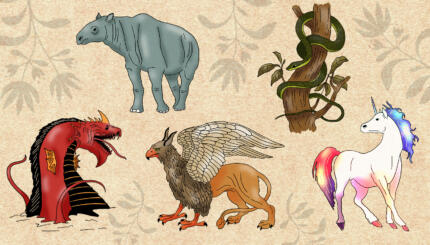Commentary on Parashat Beshalach, Exodus 13:17-17:16
Arguably, no other Torah portion is as intimately aligned with water as Parashat Beshalach. From the miraculous parting of the Red Sea, to the sweetening of the bitter waters at Marah, to the rock at Refidim giving forth water, Beshalach oozes at every juncture.
Moreover, the Shabbat upon which the portion is read is referred to as Shabbat Shira — the Sabbath of Song — ostensibly referring to shirat hayam, the song sung by Moses and The Children of Israel at the sea. Perhaps a bolder, albeit wholly defensible translation of the phrase shirat hayam is “the sea’s song” as reflected by the Psalmist, “yir’am hayam umlo’oh (Psalm 96)” — let the very sea and its fullness roar.
Water & the Patriarchs
The waters of Beshalach flow from an earlier source. There has always been a nuanced, water-based undercurrent artfully interwoven into the history of the Israelites since the days of the patriarchs and before.
Recall the wells of Abraham and Isaac, the watering holes where Eliezer encountered Rebecca (Genesis 24:17) and where Jacob first encountered Rachel (Genesis 29:2), and later the watering troughs where Jacob’s sheep miraculously multiplied (Genesis 30:38).
With your help, My Jewish Learning can provide endless opportunities for learning, connection and discovery.
Consider further if you will Joseph‘s water journey — beginning in an empty pit, notably devoid of water (Genesis 37:24), and culminating in Pharaoh’s dreams of the Nile (Genesis 41:1) which eerily foreshadow the increasingly prominent role that will be played by the Nile throughout Exodus.
The Incident at Marah
The Jewish water experience clearly reaches a triumphant crescendo in Beshalach. After the magnificent and manifest miracle of the Red Sea, however, the incident at Marah remains cryptic and elusive. To recap briefly, the Jews arrive thirsty at Marah and cannot drink because the waters are bitter. “Vayorehu Hashem etz” — God instructs Moses to take a certain wood and throw it in the water: the waters are sweetened (Exodus 15:25).
The Midrash offers several opinions as to the nature of the wood utilized by Moses to provoke such a response. Rabbi Joshua (a charcoal maker by trade) posited that it was willow. Rabbi Natan said it was a type of bitter ivy. Rabbi Elazar Hamoda’i surmised that it was an olive tree. Rabbi Joshua ben Korcha hypothesized that it was a thistle bush. To all opinions, the consensus seems to be that the wood was bitter (Tanhuma Exodus 24).
On the other hand, Rabbi Simeon bar Yohai explains the phrase “Vayorehu Hashem etz” as “God taught Moses Torah.” According to this interpretation, the “etz” in the verse refers to “etz hayim hee,“ meaning “it (the Torah) is a tree of life.” In a similar vein, the Toras Menachem brings a beautiful literal reading from the Zohar suggesting that it was a piece of wood from the Etz Hayim–the original Tree of Life in the Garden of Eden.
The Contemporary Crisis
Our contemporary journey through post-industrial history parallels in many ways the journeys of our forefathers. Water has become increasingly scarce with a concomitant diminution in both quantity and quality. Despite its seeming ubiquity, less than 3% of the world’s water supply is potable. Similarly, manufacturing has left its heavy imprint on the water supply — an integral part and thus an unwitting victim of the manufacturing process.
As the worldwide demand for raw materials increases at breakneck speeds, aggressive logging and development at an unprecedented rate have taken their toll on our forests, wreaking havoc both on wildlife habitat and threatening the vast watershed and subterranean aquifers which depend on the dense forest cover.
Numerous species of herbs and plant life whose healing powers have been known to indigenous peoples for centuries and which might have provided us with the answer to numerous medical and related issues–“bitters to sweeten the bitter”–are disappearing at an alarming rate from pristine rainforests, which are being clearcut both for the valuable old growth timber and to make room for increased cattle grazing.
How to Heal
“Ma’asei avot siman labanim“–the actions of our ancestors come to instruct us. So what lessons can we take away from this story to illuminate our own paths?
The Toras Menachem sees the various opinions in the Midrash as metaphors for differing ways of combating the bitterness or evil within ourselves. The first approach is to dilute the bitter waters with fresh water, which, according to all opinions, was not done here. The second way is to transform the bitter into sweet by adding a strong agent which will “overpower” the bitterness and cause the transformation. This approach is represented by the Zohar‘s notion of wood from the Tree of Life.
Finally there is “self-realization” or making the waters realize how bad it is to be bitter, thus convincing them to become sweet of their own accord. This result is typified by the Tanhuma and the various opinions who held that the wood was bitter.
According to the Toras Menachem, combating bitter with bitter is the spiritual service of ba’alei teshuvah — those who realize they are distant from God, and change course to return. The energy and creativity that they had put into their previous pursuits can now be invested in passion for God, Torah, and the Jewish people.
“The Holy One’s way is that God sweetens the bitter with bitter (Nahmanides on Exodus 15:25).” The Tanhuma suggests this is also the way of the righteous. Even though the modern environmental situation has reached a point where the waters seem too bitter to drink, Beshalach reminds us of the dictum of Rebbe Nachman of Breslov: “If you believe that you can destroy, then believe that you can build.”
The power that major industries and corporations have used to cause environmental destruction can be harnessed to promote a cleaner, healthier future. For example, a recent New York Times article describes how the Clorox corporation sees their acquisition of the well-known eco-minded Burt’s Bees line of beauty products as a catalyst to begin an overall “greening” of the household chemical giant.
The energy and tools needed for change are within our reach. We just need the will to utilize them, and deep understanding of that which God has taught us–“Vayorehu Hashem etz.”
A distraught father whose son was beginning to stray from the path of his forefathers once brought his son to the Alter Rebbe, Shneur Zalman of Liadi. R’ Shneur Zalman asked the boy what he enjoyed doing. The boy responded that he liked riding horses.
“And what qualities do you look for in a horse?” R’ Shneur Zalman asked him.
“Speed,” the boy replied.
“And what if you are on a fast horse which takes a wrong turn in the road?” the sage continued.
“You can get very lost in a hurry,” was the boy’s response.
“And what if you turn the horse around?” the elderly sage pressed on.
“You can get back just as fast.”
A slight smile crept across R’ Shneur Zalman’s face as the boy nodded his head, indicating that he understood the Alter Rebbe’s message.
If we take the lesson of the bitter waters of Marah to heart we can turn around our horses currently galloping out of control towards oblivion. With the will to return on a path of responsible and sustainable stewardship, using the Etz Hayim, the Torah, as our template, perhaps we too can come back just as fast, and be carried by the sweet waters of our ancestors to a cleaner future.
Suggested Action Items:
- The Internet is replete with suggestions on how to conserve water. Try starting here to access water saving ideas
- Use recycled paper products where possible. Paper and paperboard products constitute the largest portion of municipal solid waste. The greatest energy expenditure in papermaking comes from the pulping process used in virgin paper production.
- Where possible, buy wood and lumber products certified by the Forest Stewardship Council. Like an organic label for food, FSC certification assures consumers that wood products come from responsibly managed forests in which wildlife habitation and clean water are protected by ensuring that logging is done in an environmentally conscious and sustainable fashion.
- Find out what major corporations are beginning to “go green” and support their efforts through conscious consumerism.
Provided by Canfei Nesharim, providing Torah wisdom about the importance of protecting our environment.
Midrash
Pronounced: MIDD-rash, Origin: Hebrew, the process of interpretation by which the rabbis filled in “gaps” found in the Torah.
Torah
Pronunced: TORE-uh, Origin: Hebrew, the Five Books of Moses.
Zohar
Pronounced: ZOE-har, Origin: Aramaic, a Torah commentary and foundational text of Jewish mysticism.



